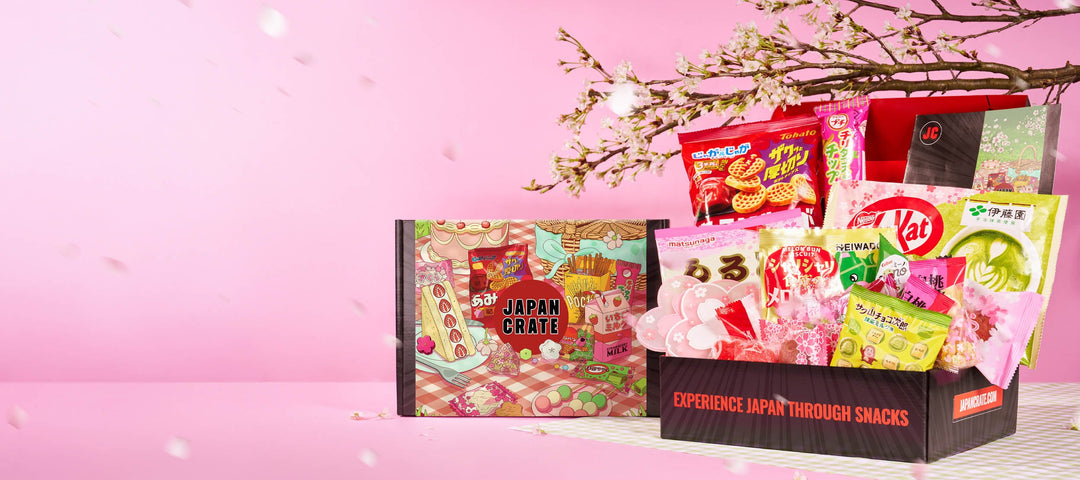Ultimate Guide to Tsukemen
Everybody has probably eaten ramen before. From your college dorm days to your vacation to Tokyo, ramen has delighted millions, if not billions, of tongues worldwide. Well-known for its delectable Japanese noodle dish, Ramen noodles are indeed virtually everywhere. In fact, ramen has long been a mainstay coming in various flavors not only on Japanese tables but around the world. However, Japan didn't stop to enhance its ramen dish. It is a no-brainer that Japan has a unique mastery of twisting things, and as a result, they paved the way for the rise of a new ramen version, the tsukemen. Read on to learn everything you need about tsukemen, where it started, and how to make tsukemen in the comfort of your kitchen.
What is Tsukemen?

Tsukemen, also known as dipping ramen noodles, is a type of ramen served with noodles and broth separately. Its name comes from the Japanese term "men," which means noodles, and "tsuke," which means dipping. You need to dip the tsukemen noodles into the soup after they are presented in a separate bowl. Instead of the customary hot soup and noodles, tsukemen contains cold noodles with a second bowl of hot dipping broth. The noodles are frequently thicker and chewier than regular ramen noodles, and the broth is richer and noticeably tastier.
In addition, tsukemen broth and noodles are also served with ramen eggs, pink and white fish cakes, braised pork belly, kamaboko, shredded nori, and thinly sliced scallions. You can top either the bowl of noodles, the bowl of dipping "soup," or both. Furthermore, the simplest way to eat tsukemen is to take a good amount of fresh ramen noodles and then dip them into the sauce, typically served in a stone bowl, to maintain the correct heat level of typical ramen broth and the hardness of the noodles. Chopsticks are used to rapidly pick up a few ramen noodles, dip them in the sauce, and slurp them down. That way, anyone can sate their noodle need without putting their tongues in some hot food. It is a popular summer dish in Japan and is frequently offered by ramen shops worldwide.
How did Tsukemen Ramen start?

There are various ideas exist about the origins of tsukemen. According to the most widely accepted version of tsukemen origins, Kazuo Yamagishi, the owner of a ramen restaurant, came up with the idea somewhere between the late 1950s and the early 1960s. The chef intended to make a dish that was both delicious and simple to eat. He came up with the notion of serving the broth and noodles separately to prevent them from becoming overly soggy and keep them lovely and firm. Yet, some accounts imply that Yamagishi might have borrowed the concept from another person.
Furthermore, some stories suggest that tsukemen was prepared as a board lunch for the shop employees. A dipping sauce had been added to leftover noodles and soup. The staff would dip the leftover cold noodles into a hot soup spiced with soy sauce, similar to zaru soba. This practice of having employees consume this meal during their break time became widespread in Tokyo's neighborhood ramen businesses. That is, at least, how the story progresses.
Additionally, Tsuke Soba was the dish's original name. Several eateries attempted to distinguish themselves from other establishments by changing their name as they entered the fray to try to market these novel dipping noodles. The term "tsukemen" didn't first occur until 1973, in a store known as Chuka Tsukemen Daiou.
What Noodles are used for Tsukemen?

The noodles are the major ingredient in tsukemen because more noodles are included than soup. A good bowl of tsukemen is determined by the quality and texture of the noodles since you will taste more of them. The texture of the noodles is more important for tsukemen than normal noodles because the noodle size tends to be bigger. Compared to hot soup ramen noodles, tsukemen noodles need to be softer, chewier, and more elastic.
That said, making homemade noodles for tsukemen should be thicker, chewier, and springier because these textures offer more surface area for the sauce to absorb. The noodles must be soft, springy, or elastic because they must be pleasurable to eat. You might have to combine various flours to make dough to attain this proper balance. If you can find high-quality udon and ramen flour, we advise you to experiment with various blending ratios to get the ideal texture for your tsukemen noodles.
How to Eat Tsukemen Dipping Ramen Noodles?

Tsukemen, commonly referred to as dipping ramen, is a Japanese noodle dish where the flavor is added by dipping the item into a hot, concentrated broth. Tsukemen is a simple meal to enjoy, despite the fact that it may appear frightening at first. All you have to do to prepare the food is toss the noodles in the soup. Here are some tips on how to enjoy this well-known dish.
1. Grab a small amount of noodles
Pick up a few noodles with your chopsticks. Tsukemen uses thick noodles so that the soup will adhere to them readily. Five to 6 noodles should be pinched between your chopsticks. Once you take up your noodles, twist one of the chopsticks to encircle it. Avoid grabbing too many noodles at once since they can escape your grasp. The noodles are going to be slick. Practice using your chopsticks until you can pick up the noodles with ease. Furthermore, consume the noodles on their own first for a better tsukemen start to appreciate the dish's flavor.
2. Dip the noodles
Since tsukemen noodles often use cold noodles, you need to totally dip your noodles in the broth to heat them up and enhance the flavor. Tsukemen is fantastic because, unlike ramen, you can choose how much of the noodle you want to dip into the broth. Not all of the noodles need to be soaked. Just dip the noodles into the soup about halfway if you want to enhance their flavor. The one thing you must avoid doing, though, is leaving the noodles submerged in the broth. This causes the soup to cool off, which compromises the flavor quickly. Consequently, it is advised that you take just a small amount of noodles, enough for one bite. This way of eating is crucial to experience the best of tsukemen.
3. Slurp the noodles
Suck in the noodles by bringing them to your mouth. Making a slurping sound when you eat noodles is acceptable in Japanese culture, so don't be concerned about it. If you're worried about dropping the noodles or spilling any soup, bring the bowl of broth closer to your mouth. Moreover, you can use chopsticks to pull toppings off the plate and dunk them into the soup alongside the noodles.
4. Add your preferred toppings
You can try dipping some of the other toppings with your tsukemen. Pick up some of the pork, egg, or other ingredients that are mixed in with your noodles with your chopsticks. To add flavor and rewarm the topping, dip it into the soup. Additionally, you can use as little or as much of the condiment as you like or combine different condiments to create a different flavor. Chili paste, soy sauce, and sriracha are a few flavors you can experiment with. Also, you can squeeze lime juice over your noodles to give them a citrus flavor.
5. Finish with dashi broth
The best and final course after enjoying a satisfying bowl of tsukemen is the soup-wari, in which hot dashi-broth is added to the soup to make it drinkable. If you wish to drink the dipping broth, add dashi stock to it to thin out your tsukemen soup once you've finished your noodles. Miso soup is traditionally made using dashi broth, a traditional fish broth in Japanese cooking. Use a spoon to eat the soup or sip it straight from the bowl. Several shops are also quite picky about the dashi broth, which usually contains chicken, seafood, and other things. If you have room for more food at the end of the meal, consider asking for some soup wari or dashi broth since it is typically free.
How to Make Tsukemen Dipping Noodles at Home?

Making tsukemen at home can be challenging, but it can also be fun. There are several tsukemen recipes that you may find, depending on the flavor of the broth that you select. Here is one of the easiest recipes to make ramen in the comfort of your own kitchen.
Ingredients you'll need:
-
fresh ramen noodles
-
sliced pork belly
-
ginger
-
3 garlic cloves
-
2 shiitake mushrooms
-
2 green onions/scallions
-
1 Tbsp roasted sesame oil
-
1 Tbsp spicy chili bean sauce or broad bean paste
-
katsuobushi (dried bonito flakes)
For seasonings:
-
⅓ cup mentsuyu/tsuyu (concentrated noodle soup base)
-
A cup of water
-
1 teaspoon of soy sauce
-
½ tablespoon of rice vinegar
Cooking Instructions:
-
Gather all the ingredients.
-
Cut the meat into 1-inch-long pieces. Grate the ginger and garlic. Finely chop scallions and slice shiitake mushrooms. Set aside.
-
When all the toppings are ready, boil water in a big pot to cook the noodles.
-
Cook the noodles following the directions on the package after being poured into the boiling water. Be sure to separate each noodle before putting them in the boiling water. Drain the water, then rinse the noodles to remove the starch. After cooking, either drain the noodles and immediately submerge them in ice water or place the strainer under cold water and mix the noodles with your fingers for a few minutes.
-
Meanwhile, place the mirin, stock, and soy sauce in a sizable pot and heat to a boil. Add the rice vinegar after lowering the heat to a simmer. Stir the miso together after passing it through a fine-mesh sieve. It should simmer for a few minutes longer until it slightly thickens.
-
When it is aromatic, add the (hot) chili bean paste. Stir continuously to avoid burning. Add the meat, shiitake mushrooms, more water, and mentsuyu before boiling. If required, skim the foam and scum using a fine strainer.
-
After incorporating miso and soy sauce, add the chopped green onions. Bring it back to a boil. The broth should have a strong flavor and plenty of salt; taste it and adjust the seasoning as necessary. Leave at room temperature after turning off the heat.
-
Combine the fish cake, ramen eggs, and cold noodles on two serving dishes or plates. Pour the warm soup into a bowl. The soup should be garnished with katsuobushi just before serving, along with the cold noodles and toppings. You can either serve the toppings individually or on top of the noodles. Enjoy!
Cooking Tips for Making Tsukemen

Use fresh ramen noodles.
The noodles are the star attraction of tsukemen. Use chukamen, or fresh ramen noodles, if you can, for better flavor and texture. Chukamen packets are often located in the Asian grocery store's refrigerator.
Go for strong flavors.
Since tsukemen broth is meant for dipping rather than sipping, it is purposefully harsher and saltier than typical ramen broth. Don't be afraid to use strong flavors because they will complement the noodles.
Experiment with your broth.
You can spice up a pre-made meat or vegetable stock to use as the foundation for your tsukemen broth. A Japanese soup base made of kombu and katsuobushi (dried bonito flakes) cooked with soy sauce, sake, and mirin can also be made at home using water.
It's Japan Crate Time!
Sugoi Mart offers a wonderful range of Japanese ramen noodles that you will certainly love to slurp. Have the best options of instant Japanese noodles delivered as often as you’d like from Sugoi Mart each month! The wide selection of flavors of Japanese ramen noodles from Sugoi Mart’s noodle collection will surely spice up your life.
Japan Crate makes it simple for consumers to get delicious sweet and savory snacks from Japan. Every nation may rely on Japan Crate's delivery and shipping services. The box you order online from Japan Crate will be right in front of your house in a short time. Taste the authentic flavor of Japanese snacks with Japan Crate now. Enjoy!
Author Bio







Leave a comment